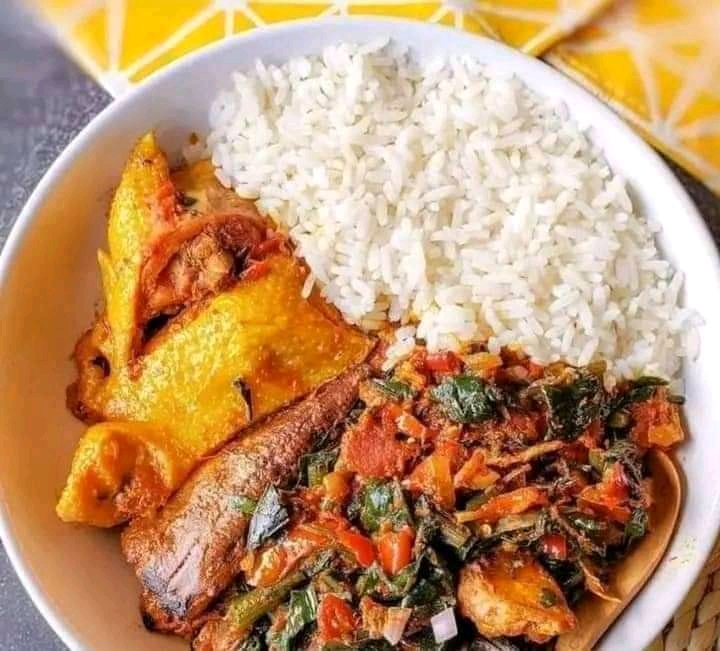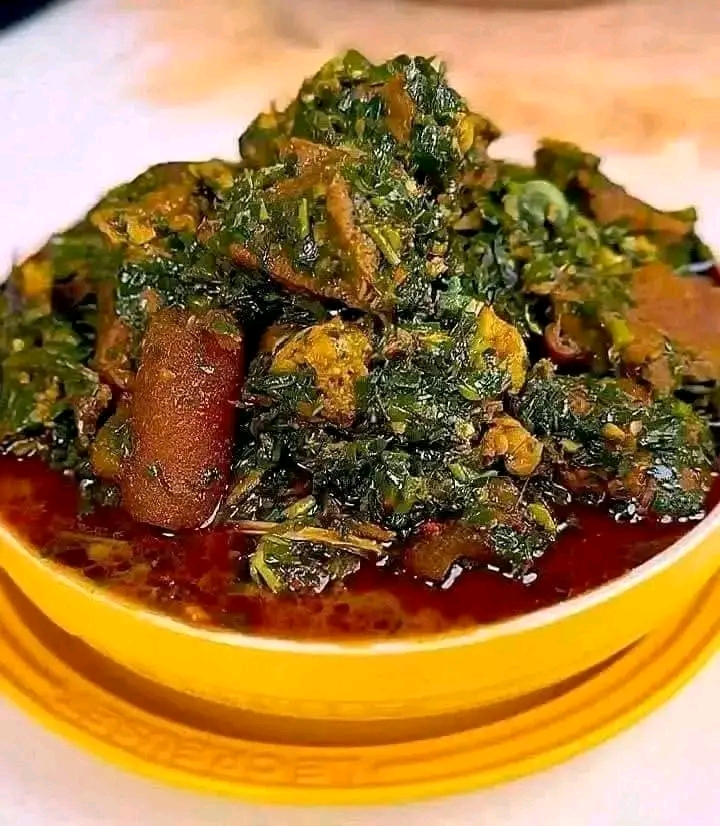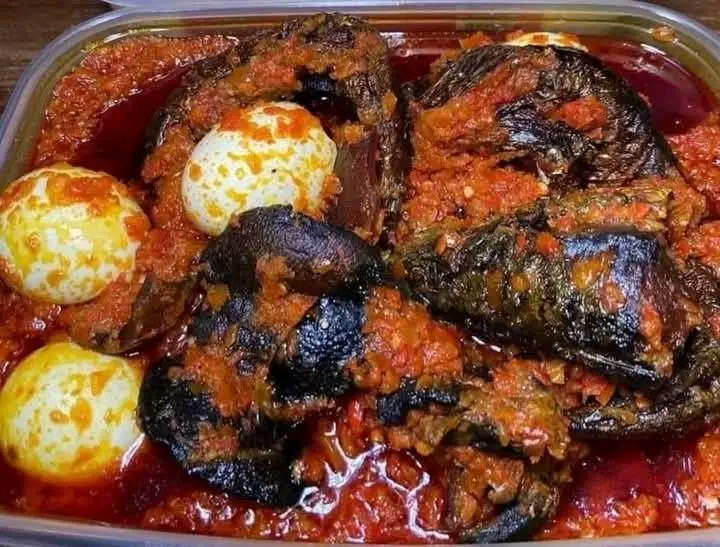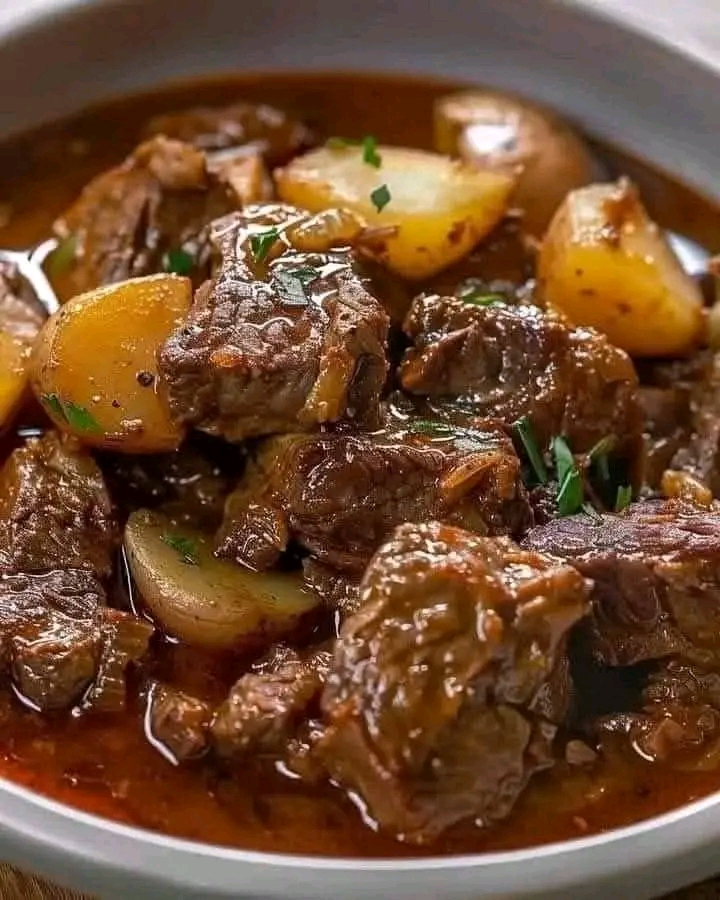Sponsored



@Strongnav
Am a very resourceful and organized person a team worker impacting humanity positively
625 Posts
352 Photos
1 Videos
Lives in Lagos
From Lagos
Male
Married
03/09/1980
-
-
"Looking at myself, the only thing that pops into my mind is my wife and my handsome son.
Looking at her, I can only remember when they called her bárren and even advised me not to be with her.
Looking at my life, I remember when I had nothing, and she used to save up just to help me.
Now, tell me—what man would make it and then leave this type of woman, except if he's ungrateful?
Once you lose such a woman, you won’t be able to find that type again."
— Stan Nze
Husband material yard May God bless us with such a partner
#followers"Looking at myself, the only thing that pops into my mind is my wife and my handsome son. Looking at her, I can only remember when they called her bárren and even advised me not to be with her. Looking at my life, I remember when I had nothing, and she used to save up just to help me. Now, tell me—what man would make it and then leave this type of woman, except if he's ungrateful? Once you lose such a woman, you won’t be able to find that type again." — Stan Nze Husband material 💯 yard May God bless us with such a partner 🙏 #followers0 Comments ·0 Shares ·0 Reviews -
-
-
MY HUSBAND MARRIED ME FOR HIS DOG, EVERY LADY MUST HEAR THIS.
I made a mistake marrying my husband. I let the love of money confuse me. I had a guy who was really interested in me but I didn't give him a chance because he was still a student
I didn't want to start waiting for a long time, Besides, I don't have any idea when things will get better for him.
I met my husband at a mall, my husband is a rich man, the time we met,he was driving fortune. to cut the story Short, my husband took me to his house.
He showed me his vehicles, he has four cars a big house, I have never seen in my life. he asked me to date him and I said Yes.
Only two week in our relationship, he asked me to marry him, for the love of money I had I said yes. We got married but the story became different. He wouldn't make love to me. Instead, he will get me so drunk and made me sleep. Then, his dog would come over me to have Sex.
That happened for two weeks until I stopped taking the drugs. Although I didn't expect a dog sleeping with me, I would not even think about it, It was until one day he tried to get me drunk I pretended I was asleep, I slept off and even faked snoring.
He came in, rubbed his hands over my face. Then he went out and brought his dog.
He chanted some incantation on the dog and pushed it on me. Then I woke up and screamed.
He looked confused and started begging me. He said if you don't sleep with this dog I will run mad. I insisted that I will never do that better you run mad.
The dog was the secret of his wealth. He used it to take the body fluid of women for his evil ordeal. I went to the hospital for a medical check up. The doctor said my womb has been tampered with. I wept bitterly. I have been used. I let the love of money destroy me.
To all the single ladies out there, don't be like me, If a guy is promising, give him a chance. Not all that glitters are gold.
Learn from this story.
Follow Elegant White Jenny for more interesting stories
May God help us. .. .
Share and also follow
And God bless you
#goodvibes #goviral #trend #everyoneシ゚ #everyonefollowers #reelsviralシ #highlightseveryone #viralpost2025シ #highlights #highlightsシ゚ #highlightseveryonefollowers2025 #highlightseveryonefollowers #highlights2025 #fypviralシ #fypシviralシ2024 #everyonehighlights #everyonehighlightsfollowers #trendingpost #trendingnow #storytelling #stories #storyMY HUSBAND MARRIED ME FOR HIS DOG, EVERY LADY MUST HEAR THIS. I made a mistake marrying my husband. I let the love of money confuse me. I had a guy who was really interested in me but I didn't give him a chance because he was still a student I didn't want to start waiting for a long time, Besides, I don't have any idea when things will get better for him. I met my husband at a mall, my husband is a rich man, the time we met,he was driving fortune. to cut the story Short, my husband took me to his house. He showed me his vehicles, he has four cars a big house, I have never seen in my life. he asked me to date him and I said Yes. Only two week in our relationship, he asked me to marry him, for the love of money I had I said yes. We got married but the story became different. He wouldn't make love to me. Instead, he will get me so drunk and made me sleep. Then, his dog would come over me to have Sex. That happened for two weeks until I stopped taking the drugs. Although I didn't expect a dog sleeping with me, I would not even think about it, It was until one day he tried to get me drunk I pretended I was asleep, I slept off and even faked snoring. He came in, rubbed his hands over my face. Then he went out and brought his dog. He chanted some incantation on the dog and pushed it on me. Then I woke up and screamed. He looked confused and started begging me. He said if you don't sleep with this dog I will run mad. I insisted that I will never do that better you run mad. The dog was the secret of his wealth. He used it to take the body fluid of women for his evil ordeal. I went to the hospital for a medical check up. The doctor said my womb has been tampered with. I wept bitterly. I have been used. I let the love of money destroy me. To all the single ladies out there, don't be like me, If a guy is promising, give him a chance. Not all that glitters are gold. Learn from this story. Follow Elegant White Jenny for more interesting stories May God help us. .. . Share and also follow And God bless you #goodvibes #goviral #trend #everyoneシ゚ #everyonefollowers #reelsviralシ #highlightseveryone #viralpost2025シ #highlights #highlightsシ゚ #highlightseveryonefollowers2025 #highlightseveryonefollowers #highlights2025 #fypviralシ #fypシviralシ2024 #everyonehighlights #everyonehighlightsfollowers #trendingpost #trendingnow #storytelling #stories #story0 Comments ·0 Shares ·0 Reviews -
The Tulsa Race Massacre, often referred to as the destruction of "Black Wall Street," occurred in 1921, not in the early 1990s. It was one of the most devastating instances of racial violence in U.S. history. Here is a detailed account of the events:
### Background
Greenwood District in Tulsa, Oklahoma, was a thriving African American community known as "Black Wall Street" due to its prosperous businesses and affluent residents. The area was a symbol of black economic success and self-sufficiency in the early 20th century.
### The Incident
The massacre began on May 31, 1921, and lasted through June 1, 1921. The catalyst was an incident involving a young black man named **** Rowland and a white woman named Sarah Page in an elevator. Rowland was accused of assaulting Page, although the details of the encounter remain unclear. Rowland was arrested, and rumors of a potential lynching spread.
### Escalation
1. **May 31, 1921:**
- A white mob gathered outside the Tulsa County Courthouse where Rowland was held, demanding that he be handed over to them.
- A group of armed black men, many of whom were World War I veterans, arrived at the courthouse to protect Rowland. They were turned away by the sheriff but the presence of armed black men incensed the white mob.
- Shots were fired, and a violent confrontation ensued.
2. **June 1, 1921:**
- The white mob, now numbering in the thousands, began attacking the Greenwood District.
- They looted and burned homes, businesses, and churches. Private planes were reportedly used to drop incendiary devices on the community.
- The Oklahoma National Guard was called in, but they reportedly assisted in the arrest of black residents rather than protecting them.
- The violence continued throughout the day, resulting in the deaths of an estimated 300 black residents and the displacement of thousands.
### Aftermath
- **Destruction:** Over 1,200 homes were destroyed, along with numerous businesses, schools, churches, and a hospital. The economic loss was immense, with property damage estimated at over $1.5 million at the time (equivalent to about $30 million today).
- **Casualties:** The exact number of deaths is unknown, but estimates range from 75 to 300. Many victims were buried in unmarked graves.
- **Displacement:** Approximately 10,000 black residents were left homeless and were forced to live in internment camps set up by the National Guard.
- **Legal Aftermath:** No one was held accountable for the violence. Insurance claims filed by black residents were denied, and the city attempted to pass zoning laws to prevent the rebuilding of Greenwood.
### Legacy
The Tulsa Race Massacre was largely omitted from local, state, and national histories for decades. It wasn't until the late 20th century that efforts to uncover and acknowledge the event gained momentum. In recent years, there have been calls for reparations and formal recognition of the massacre's impact on the black community in Tulsa.
The massacre remains a poignant reminder of the racial violence and systemic inequality that African Americans have faced in the United States. Efforts to educate the public and honor the victims continue to this day.The Tulsa Race Massacre, often referred to as the destruction of "Black Wall Street," occurred in 1921, not in the early 1990s. It was one of the most devastating instances of racial violence in U.S. history. Here is a detailed account of the events: ### Background Greenwood District in Tulsa, Oklahoma, was a thriving African American community known as "Black Wall Street" due to its prosperous businesses and affluent residents. The area was a symbol of black economic success and self-sufficiency in the early 20th century. ### The Incident The massacre began on May 31, 1921, and lasted through June 1, 1921. The catalyst was an incident involving a young black man named Dick Rowland and a white woman named Sarah Page in an elevator. Rowland was accused of assaulting Page, although the details of the encounter remain unclear. Rowland was arrested, and rumors of a potential lynching spread. ### Escalation 1. **May 31, 1921:** - A white mob gathered outside the Tulsa County Courthouse where Rowland was held, demanding that he be handed over to them. - A group of armed black men, many of whom were World War I veterans, arrived at the courthouse to protect Rowland. They were turned away by the sheriff but the presence of armed black men incensed the white mob. - Shots were fired, and a violent confrontation ensued. 2. **June 1, 1921:** - The white mob, now numbering in the thousands, began attacking the Greenwood District. - They looted and burned homes, businesses, and churches. Private planes were reportedly used to drop incendiary devices on the community. - The Oklahoma National Guard was called in, but they reportedly assisted in the arrest of black residents rather than protecting them. - The violence continued throughout the day, resulting in the deaths of an estimated 300 black residents and the displacement of thousands. ### Aftermath - **Destruction:** Over 1,200 homes were destroyed, along with numerous businesses, schools, churches, and a hospital. The economic loss was immense, with property damage estimated at over $1.5 million at the time (equivalent to about $30 million today). - **Casualties:** The exact number of deaths is unknown, but estimates range from 75 to 300. Many victims were buried in unmarked graves. - **Displacement:** Approximately 10,000 black residents were left homeless and were forced to live in internment camps set up by the National Guard. - **Legal Aftermath:** No one was held accountable for the violence. Insurance claims filed by black residents were denied, and the city attempted to pass zoning laws to prevent the rebuilding of Greenwood. ### Legacy The Tulsa Race Massacre was largely omitted from local, state, and national histories for decades. It wasn't until the late 20th century that efforts to uncover and acknowledge the event gained momentum. In recent years, there have been calls for reparations and formal recognition of the massacre's impact on the black community in Tulsa. The massacre remains a poignant reminder of the racial violence and systemic inequality that African Americans have faced in the United States. Efforts to educate the public and honor the victims continue to this day.0 Comments ·0 Shares ·0 Reviews -
-
Let's cook (vegetable soup)
Family Home made Vegetable soup
Ingredients:
Pumpkin leaves(Ugwu)
200g Water leaves
500g of assorted meat(cow tripe (shaki),snails, cow’s skin(kanda),
Stockfish(optional)
Smoked fish
250ml palm oil
1 cup Periwinkles (optional), but it gives the soup a boost
2 tablespoons ground crayfish
2 stock cubes
1 medium sized onion
2 scotch bonnet Pepper a.k.a fresh pepper
Salt to Taste
METHOD OF COOKING:
PREPARATIONS BEFORE COOKING;
Note: Prepare the vegetables by washing and cutting them into tiny bits (thin slices preferably) and set aside.
-Wash and cut the assorted meat in bite-able sizes. Clean the periwinkles, dried fish and stock fish and set aside.
How to cook the Edikang Ikong Soup:
-Place the assorted meat and stock fish in the pot , add a little water, the chopped onion and one stock cube.
-Cook until all the meat is properly cooked and there is just a little liquid in the pot (remember to cook the toughest meat first).
-When the meat is done, add the dried fish and periwinkle (Optional)
-Add the palm oil, the ground pepper and crayfish and leave to boil for about 10 minutes.
-Now add the water leaves(or lamb lettuce) and leave to cook for 3 minutes.
-Then add the Ikong Ubong /Ugu leaves (fluted pumpkin leaves) and salt to taste.
-Stir thoroughly and leave to simmer for 5 minutes on low heat and your vegetable soup is ready. Enjoy!
#youngmumLet's cook (vegetable soup) Family Home made Vegetable soup Ingredients: Pumpkin leaves(Ugwu) 200g Water leaves 500g of assorted meat(cow tripe (shaki),snails, cow’s skin(kanda), Stockfish(optional) Smoked fish 250ml palm oil 1 cup Periwinkles (optional), but it gives the soup a boost 2 tablespoons ground crayfish 2 stock cubes 1 medium sized onion 2 scotch bonnet Pepper a.k.a fresh pepper Salt to Taste METHOD OF COOKING: PREPARATIONS BEFORE COOKING; Note: Prepare the vegetables by washing and cutting them into tiny bits (thin slices preferably) and set aside. -Wash and cut the assorted meat in bite-able sizes. Clean the periwinkles, dried fish and stock fish and set aside. How to cook the Edikang Ikong Soup: -Place the assorted meat and stock fish in the pot , add a little water, the chopped onion and one stock cube. -Cook until all the meat is properly cooked and there is just a little liquid in the pot (remember to cook the toughest meat first). -When the meat is done, add the dried fish and periwinkle (Optional) -Add the palm oil, the ground pepper and crayfish and leave to boil for about 10 minutes. -Now add the water leaves(or lamb lettuce) and leave to cook for 3 minutes. -Then add the Ikong Ubong /Ugu leaves (fluted pumpkin leaves) and salt to taste. -Stir thoroughly and leave to simmer for 5 minutes on low heat and your vegetable soup is ready. Enjoy! #youngmum0 Comments ·0 Shares ·0 Reviews -
-
More Stories









